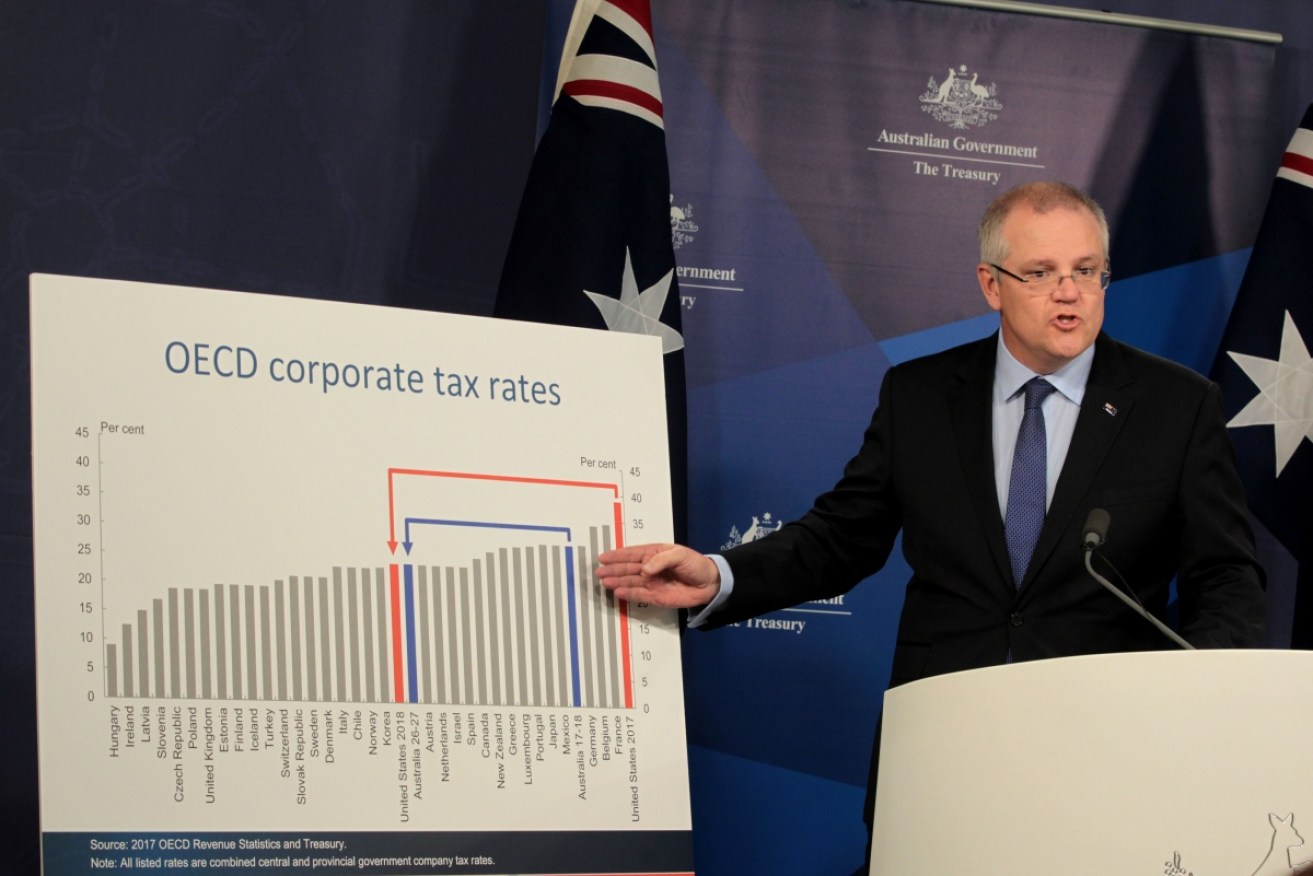Shaky assumptions underpin company tax cuts


Treasurer Scott Morrison responding to the passing of US company tax cuts in late 2017. Photo: AAP
The claim that Australia’s company tax rate must be cut to remain ‘competitive’ looks weaker by the day, with data reviewed by The New Daily showing Australia’s tax regime is more generous than headline rates suggest.
The government has argued that cuts to the US headline rate from 35 to 21 per cent will require Australia to follow suit, or risk losing inward investment and jobs.
As commentator Nick Cater wrote in The Australian on Tuesday: “Australia’s effective company tax rate – the amount of tax paid as a proportion of actual profits – is well above the global average.”
That othodoxy has been repeated by numerous political and business voices in past days, but misconstrues the term ‘effective tax rate’.
Separate modelling by economists at the Oxford University Centre for Business Taxation and the US Congressional Budget Office have produced very different figures for Australia’s effective company tax rate – the former estimating it at 26.6 per cent and the latter putting it at 10.4 per cent.
The former figure is preferred by the government, but the assumptions made by the two studies make that a highly selective choice.
Apples and oranges
Estimating effective tax rates is extremely difficult, because there are no neat boundaries between types of tax – especially ‘company tax’ and ‘personal tax’.
In the US, where President Donald Trump has reduced the federal company tax rate from 35 to 21 per cent, companies pay large state-level taxes, and contribute to social security payments for their staff.
In Australia, most taxes (79.3 per cent) are collected at the federal level compared to just 43.3 per cent in the US (see page 13 of this OECD document).
And in Australia companies are not required to contribute to social security payments – which the OECD lists as making up 23.7 per cent of total US tax revenue, but 0 per cent in Australia.
That complicates things, because companies operating in Australia get to employ staff whose health and retirement income safety-nets are paid from non-company taxes, whereas US companies do not.
But putting that aside for now, how did teams of world-class economists produce such vastly different estimates of Australia’s effective company tax rate?
The key lies buried in the assumptions of the two studies.
Both studies define what they think is a ‘typical’ company, and then model what its tax bill would look like in various tax regimes.
The US study uses average characteristics of US firms, and the UK study averages the characteristics of 300,000 European companies.
This is the source of the discrepancy, because the way a company is structured hugely influences the tax expenses it can claim, and the depreciation schedules it can use to write assets down over time.
The two ‘average company’ profiles look quite different.
‘Plant and machinery’ make up similar proportions – 25.6 per cent of the European firm’s assets and 22.9 per cent in the US.
Investment in buildings is hugely different – 24 per cent in Europe and 48.1 per cent in the US.
Intangible assets are only 8.7 per cent in Europe, but 18.6 per cent in R&D-rich America.
And inventories, estimated at 41.7 per cent in Europe, make up a teeny 10.5 per cent of assets for US firms.
Why do these disparities matter? Because firms always structure themselves to minimise tax bills, and it is the depreciation and expenses write-offs that are the main game in this repect – much more important than the headline tax rate.
Sydney University tax law expert Professor Michael Dirkis told The New Daily on Tuesday: “The debate is proceeding on the assumption that companies are naive enough to follow headline rates around.”
In reality a blanket effective tax rate cannot be calculated for all businesses – Qantas, Telstra and BHP have different levels of access to tax write-offs.
Some firms will be closer to the US model’s ‘typical’ company, and some closer to the UK model’s version.
Companies are, in effect, on a spectrum somewhere between two.
University tax law expert Ann O’Connell points out, for example, that mining companies have large ‘real property’ assets in their mining leases and so are closer to the US model.
As previously covered, extending the government’s tax cuts from small firms to the big end of town will provide large windfall profits to their foreign shareholders.
It will also push more of the tax burden back onto struggling households via personal income taxes.
That is all done in the name of increasing inward investment, jobs and growth.
Well perhaps, but voters might feel more comfortable if the government made a genuine case, based on the full picture, rather than relying on a cherry-picked article of faith.








